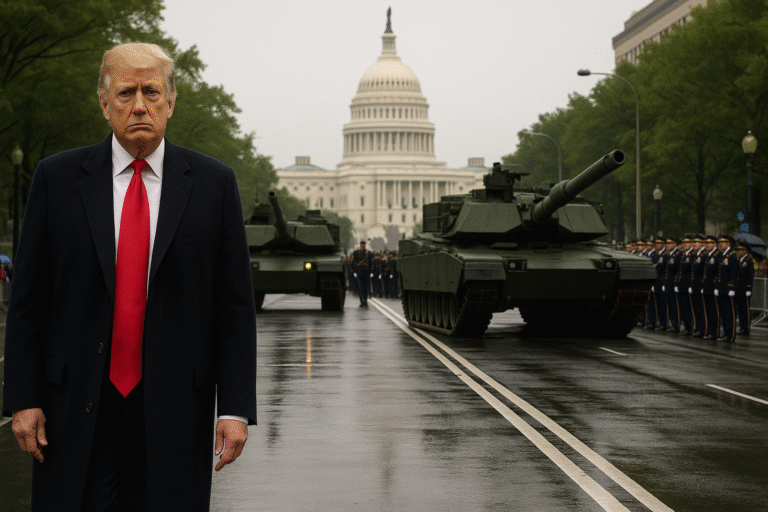Summary:
Years in the Making, Underwhelming in Delivery: Trump finally got his long-desired military spectacle, but failed to meet expectations on both sides of the political divide.
Politicized Backdrop: Protests, partisan tensions, and controversial national events overshadowed what was meant to be a celebration of military pride.
Disorganized and Dull: Logistical chaos, lackluster crowd turnout, and a confused atmosphere left many attendees describing the $25–$45 million event as disappointing.
After years of pushing for a grand display of military might, President Donald Trump’s long-coveted parade finally rolled through Washington, D.C., on Saturday. Meant to commemorate the U.S. Army’s 250th anniversary and, coincidentally, Trump’s 79th birthday, the event featured tanks, marching troops, helicopters, and a 21-gun salute. But despite its spectacle, the parade landed with an unmistakable thud.
It wasn’t the authoritarian showcase many critics feared, nor the rousing MAGA rally Trump supporters envisioned. Instead, it was a muted and muddled affair, defined as much by its lack of energy as by its heavy military hardware. “Just kind of … lame,” one young attendee remarked, a sentiment echoed even by some Trump loyalists.
The parade unfolded under overcast skies and intermittent rain, dampening enthusiasm among spectators. A sea of competing protests and political tensions formed the event’s backdrop: demonstrators chanted against immigration raids and Trump’s authoritarian style, while pro-Trump attendees countered with American flag garb and chants. Some bore signs like “Trump for King” or wore ironic messages such as “Commander Bone Spur,” a jab at Trump’s Vietnam-era draft deferments.
Even the parade’s logistics came under fire. Overflowing trash cans, long food lines, and poor signage created confusion throughout downtown D.C. “Nobody knows what’s going on,” one officer admitted.
More seriously, a recent national crisis was towering over the event. In California, National Guard deployments clashed with state officials amid protests over Immigration and Customs Enforcement (ICE) raids. Overseas, the escalating conflict between Israel and Iran captured headlines. Meanwhile, a politically motivated shooting that left two Democratic lawmakers and their families dead or wounded in Minnesota cast a dark shadow over the celebration.
Although the military covered the estimated $25–$45 million cost, including infrastructure modifications to support tanks on city streets, local residents expressed frustration over the disruption and the political overtones. Critics said Trump had turned a national observance into a personal vanity project.
Some supporters defended his intentions. “Trump wants to keep us safe,” said a Pennsylvania woman draped in red, white, and blue. “He’s not Hitler.” Others insisted he was taking bold steps where “weak” Democratic leaders had failed. But even among the faithful, attention wavered. By the midpoint of the parade, many were already leaving, discouraged by the chaotic logistics.
In the end, Trump’s military pageant proved neither the feared show of force nor the patriotic crescendo he likely envisioned. Instead, it was a reminder of how polarizing and performative political gestures can become, and how even a parade filled with tanks can somehow feel hollow.

